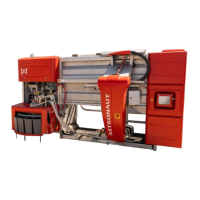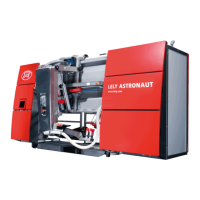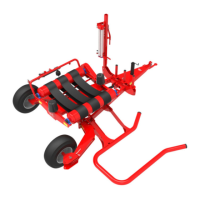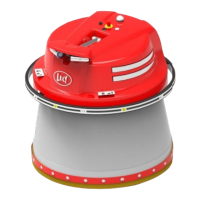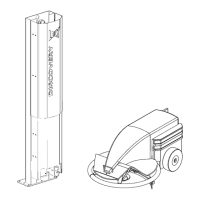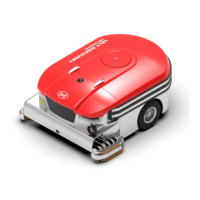Chapter 6 - page 3
Operator’s manual ASTRONAUT
M-HE.002.1003
If the filters are replaced three times a day, but remain filthy nevertheless, the following actions might improve the
situation:
• Check the condition of cleaning brushes.
• Replacement of cleaning brushes (figure 6.2). We
recommend to replace the brushes on a regular basis. If the
brushes are torn, they may not function properly.
• Increase the number of pre-treatment operations by the
robot. Please refer to section 3.4.4 ’Adjust’.
• Check if the brushes are cleaned with sufficient water and
cleaning agent.
• More litter in the stable. Litter absorbs a large quantity of
moisture resulting in cleaner udders.
• Clean cubicles and passages (if necessary) more often.
Clean cows require sufficient attention in the area of cow
care and cow housing. Application of a knee-beam (floating
or fixed) may keep the cow from lying too far forward in the
box.
• Udder shaving. Dirt attaches less easily to shaved udders
than very hairy udders. Udders which are shaved on time also reduce laser mistakes during teat position. Cut
the tail plume approx. 3 cm (1.2 in.) below the lower tail bone.
• Adjustment of feed ration. Concentrates of little structure may lead to contamination of the cubicles.
• Securing of cows in heat. When there is more peace in the herd, the cows are less likely to smudge
themselves or the others.
NOTE
• Only with the consent of your service technician!
Higher pre-treatment. The robot arm is capable of a higher pre-treatment in respect of the bottom side of the teat.
NOTE
• The factory-fitted vacuum gauge is not calibrated. That is
why during inspection the vacuum level should be
compared with the vacuum level after a service session.
Variations in the vacuum level are disadvantageous for
the udder health.
• Contact your service technician in case you detect a
deviation which is difficult to adjust.
• Verify for correct air pressure values/settings (figure 6.3).
• Check the vacuum level.
• Clean the outside of the milking installation.
The outside of the teat cups should be cleaned manually.
The top of the teat cup liner head is cleaned on a regular
basis. The milking installation is cleaned automatically at
least three times a day. Use a bucket with water and a
brush or a soft spout hose. The use of a high pressure
cleaner is discouraged.
Figure 6.2 Cleaning brushes (new models)
Cleaning
brushes
Figure 6.3 Air pressure indication
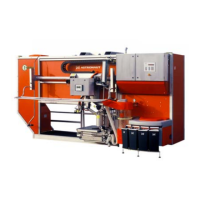
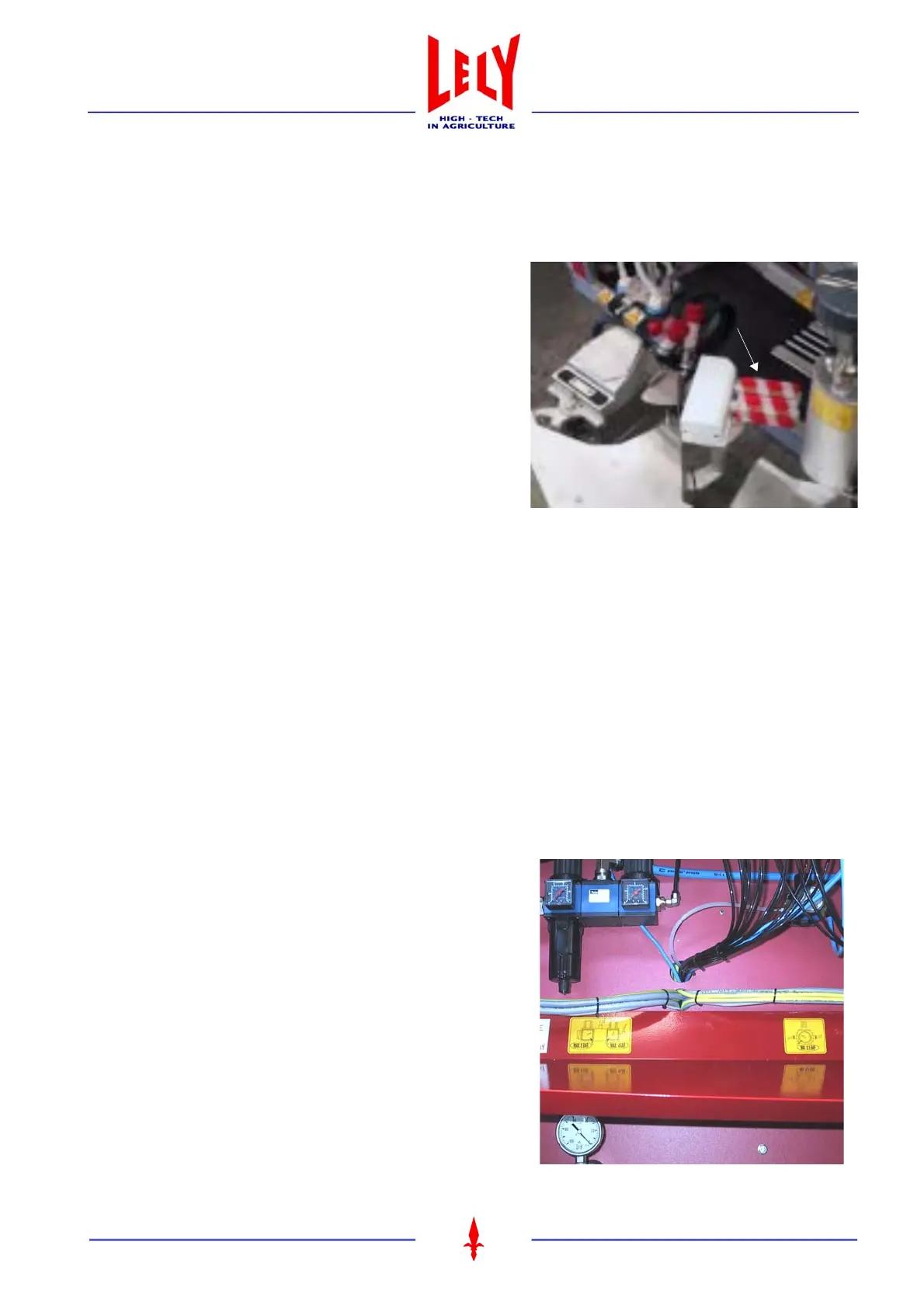